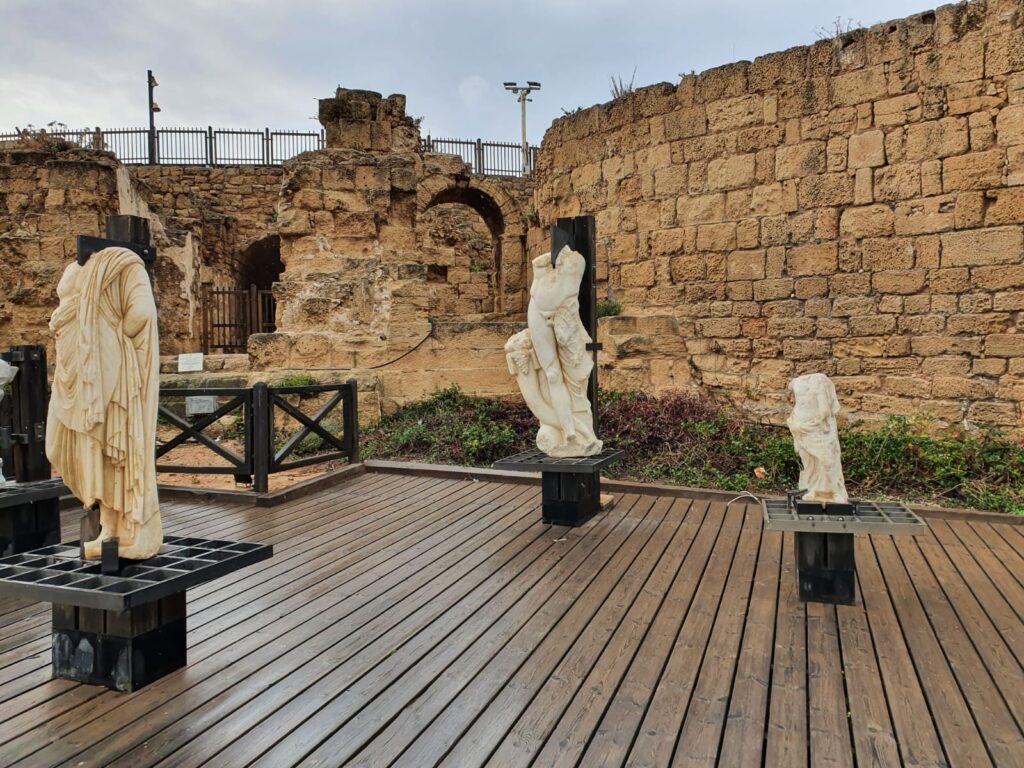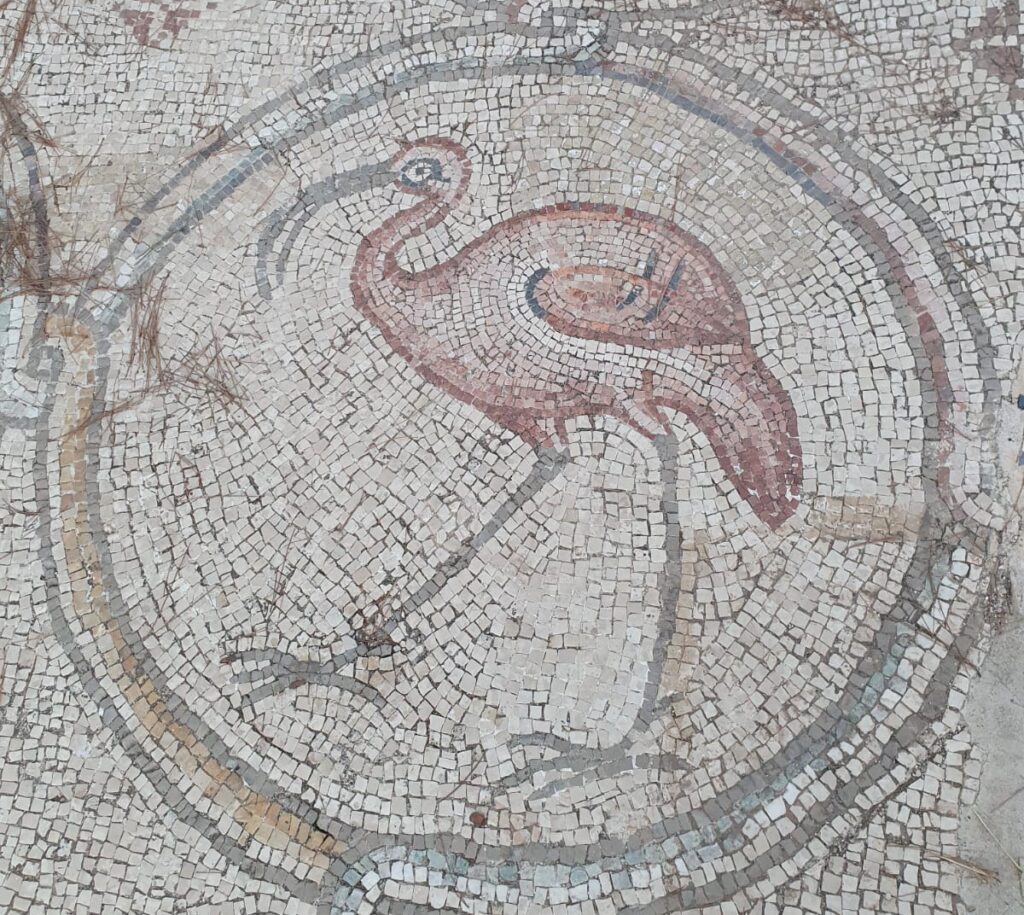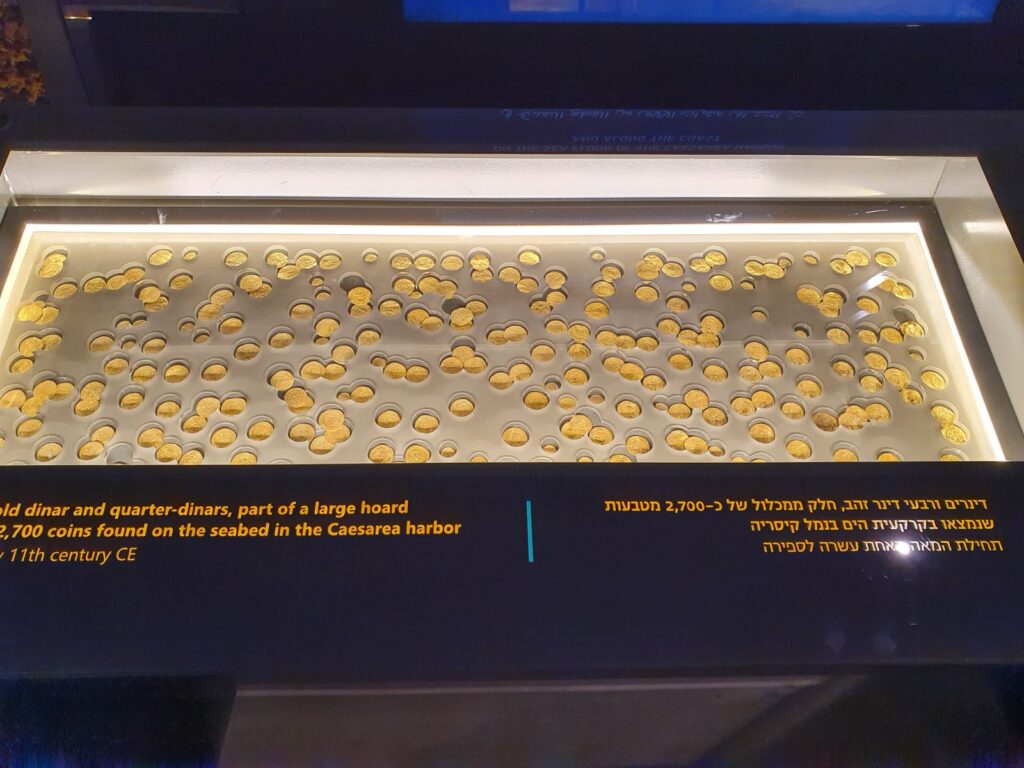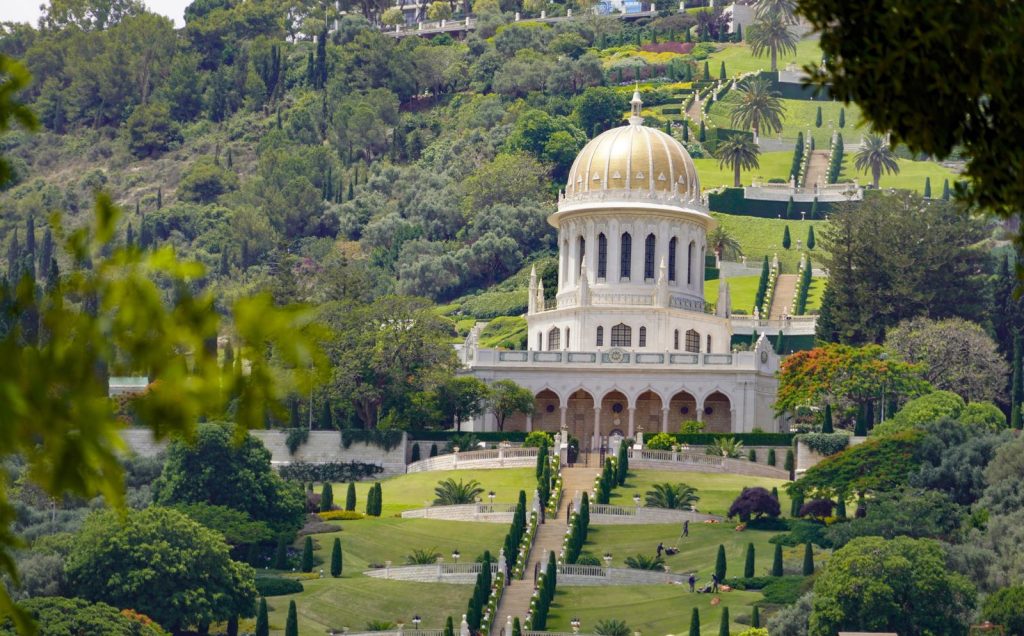גילי דרור Gily Dror » Day Tour in Israel – Caesarea and Haifa
Day Tour in Israel – Caesarea and Haifa
Caesarea National Park
We’re exploring the ancient ruins of Caesarea, walking through Herod’s grand port city. The Roman theater stands tall, the hippodrome echoes with past chariot races, and the Crusader fortress overlooks the sea. History comes alive with every step!
The Birds Mosaic
At the Birds Mosaic in Caesarea, we step onto a beautifully preserved Byzantine-era floor, adorned with colorful depictions of birds in intricate detail. Surrounded by ancient ruins and open skies, the artistry offers a glimpse into the past, where elegance and craftsmanship flourished by the sea.
Archaeological remains and a gold treasure in Caesarea
In Caesarea, archaeologists have uncovered impressive ancient remains, including Roman, Byzantine, and Crusader structures. One of the most remarkable discoveries is a treasure of gold coins from the Islamic period, hidden for centuries, offering a glimpse into the city’s diverse and dynamic history.
A tour through the German Colony, the Bahá'í Gardens, and Wadi Nisnas
A tour that combines the advantages of Haifa as a city that hosts many religions. We’ll begin in the German Colony, visit the Haifa City Museum, tell the story of the German Templars, and get to know some of the significant figures of the colony. Up along Carmel Strasse (Ben Gurion Boulevard), we’ll visit the lower section of the Bahá’í Gardens and finish in the vibrant market atmosphere of Wadi Nisnas.
A Culinary and Art Adventure in Haifa's Wadi Nisnas
Immerse yourself in the vibrant flavors and rich culture of Haifa’s most charming neighborhood. Wander through the bustling market, meet the locals, and savor authentic delights like freshly made baklava, creamy hummus, and crispy falafel. Along the way, discover the fascinating history of Haifa, Israel’s third-largest city, and experience the perfect blend of food, art, and storytelling in this unforgettable tour!

Best day tours in Israel
Want to explore and tour as a local in Israel? you can do it by choose from a variety of day tours to popular destinations like Jerusalem, the Dead Sea, Masada, and the Galilee, with options departing from Tel Aviv, Jerusalem, and other locations. Popular tours include visits to the Old City of Jerusalem, Masada and the Dead Sea, and the Galilee with Nazareth and the Sea of Galilee.
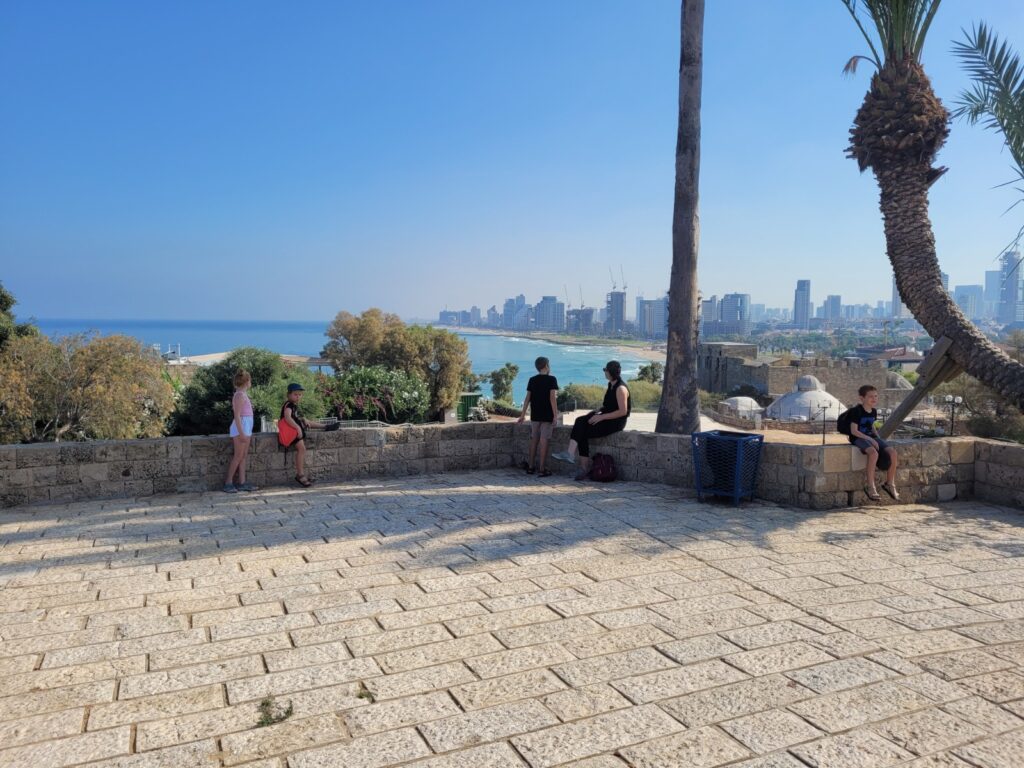
Frequently Asked Questions
Is Caesarea worth visiting?
Caesarea is definitely worth visiting! It’s a unique blend of ancient history, stunning coastal views, and impressive archaeological sites. You can explore the remains of a Roman theater, the ancient port built by King Herod, a Crusader fortress, and beautiful mosaics. The mix of history, culture, and natural beauty makes it a fascinating destination for history buffs and casual travelers alike.
What is there to do in Caesarea?
n Caesarea, there’s plenty to explore and enjoy:
Roman Theater: Visit the well-preserved theater where performances still take place today.
Herod’s Ancient Port: Explore the remains of the grand port built by King Herod, once a bustling trade hub.
Crusader Fortress: Wander through the ruins of a medieval fortress with stunning views of the Mediterranean.
Byzantine Baths and Mosaics: Discover beautifully detailed mosaics, including the famous Birds Mosaic, and ancient bathhouses.
Hippodrome: Walk along the remains of the chariot racing arena.
Caesarea National Park: Enjoy the open-air museum with scenic views of the sea and many other historical ruins.
Why was Caesarea Maritima built?
Caesarea Maritima was built by King Herod the Great around 22-10 BCE as a grand port city and a center of trade and commerce. Herod wanted to establish a thriving harbor on the Mediterranean Sea, as the region lacked a natural deep-water port. The city was designed to be an impressive and strategically important hub, serving as a vital link for trade between Rome and the Eastern Mediterranean. It was also intended to solidify Herod’s political power by creating a magnificent city that honored the Roman Emperor Augustus, after whom it was named, and by showcasing his architectural and engineering abilities. Over time, Caesarea grew into a major city of the Roman Empire, with a diverse population and important religious, administrative, and military roles.

